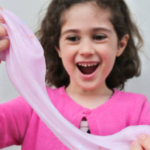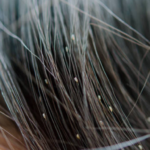Lice infestations are a common and frustrating problem, especially among school-aged children. Lice eggs, or nits, are particularly troublesome because they are hard to see and even harder to remove. Preventing them from hatching can be the key to stopping an infestation in its tracks. This comprehensive guide will explore various strategies to prevent lice eggs from hatching and how to tackle an active lice infestation.
Understanding Lice and Their Lifecycle
To effectively prevent lice eggs from hatching, one must understand the lifecycle of a head louse. The cycle starts when an adult female louse lays eggs on a hair shaft. These nits are secured with a glue-like substance that makes them hard to dislodge. After about a week, the eggs hatch, releasing nymphs. These immature lice mature into adults within seven days, and the cycle begins anew.
Over-the-Counter Treatments

The first line of defense against lice and their eggs often includes over-the-counter (OTC) treatments. Products containing permethrin or pyrethrin are widely used. They are designed to kill live lice and, with repeated applications, some of the nits. However, resistance to these chemicals has been reported, so it’s not always a foolproof solution.
Prescription Medications
When OTC treatments fail, prescription medications may be the next step. These include lotions and shampoos containing stronger chemicals that are more effective at killing both lice and their eggs. Examples include benzyl alcohol lotion, ivermectin lotion, and spinosad topical suspension. These treatments can be more costly and may have more side effects, so they should be used under medical guidance.
Nit Combing
Nit combing is a physical method of removing lice eggs. Using a specially designed fine-toothed metal comb, you meticulously go through the hair, section by section, to manually remove nits. This method requires patience and persistence, as it needs to be done regularly over several days to ensure all eggs have been captured.
Home Remedies

Some people prefer natural methods to prevent lice eggs from hatching. Applying substances like olive oil, mayonnaise, or vinegar to the hair has been touted to suffocate lice and loosen the glue that holds nits to the hair shaft. While there is anecdotal evidence supporting these methods, there is little scientific proof of their effectiveness.
Heat Treatment
Lice are sensitive to high temperatures. A professional heat treatment can dehydrate and kill lice and their eggs. Some at-home methods include using a hair dryer on damp hair after applying a lice treatment product. Extreme caution should be used to avoid burns or overheating the scalp.
Environmental Control
Lice spread through direct contact with an infected person or their belongings. It’s important to wash and dry bedding, clothing, and stuffed animals on high heat to kill any lingering lice or nits. Items that can’t be washed should be sealed in plastic bags for two weeks to suffocate any live lice.
Prevention Strategies
Preventing an initial infestation is always easier than stopping lice once they’ve taken hold. Encourage children to avoid head-to-head contact, not to share personal items like hats and hairbrushes, and to keep belongings separate at school.
Ongoing Vigilance
Regular head checks are crucial, especially during an outbreak at school or in the community. Using a nit comb through wet hair every week can help catch an infestation early. Treating a case of head lice promptly can prevent the spread to others and the environment.
Seeking Professional Help
If you’ve tried multiple methods and still struggle with lice, it might be time to seek professional help. Dermatologists and companies specializing in lice treatment can provide services that might be more effective than at-home treatments.
Aftercare

Once the active infestation is under control, ongoing aftercare is important to prevent reinfestation. This includes regular hair inspections, maintaining good hair hygiene, and educating family members about avoiding direct contact or sharing personal items.
Conclusion
Lice infestations can be challenging to manage, especially when it comes to preventing the eggs from hatching. It’s important to use a multi-faceted approach that includes chemical treatments, manual removal, home remedies, and environmental control. Consistency and thoroughness are key in preventing nits from becoming a bigger problem. Remember that while lice are a nuisance, they do not carry diseases, and with the proper steps, an infestation can be effectively managed and eradicated.
FAQ (Preventing Lice Eggs from Hatching)
Lice eggs, commonly known as nits, are the eggs laid by the female head louse. They are often found attached to individual hair strands close to the scalp and are tiny, oval-shaped, and range from a white to yellowish-brown color.
Lice eggs typically take about 7 to 10 days to hatch into nymphs after being laid.
Yes, there are over-the-counter treatments that contain ingredients like permethrin or pyrethrin, which can be effective in killing lice and sometimes eggs. However, some eggs might be resistant and require manual removal.
Prescription treatments such as ivermectin, spinosad, or malathion have higher efficacy rates in killing both lice and their eggs. However, they are usually recommended for use when over-the-counter treatments have failed.
Yes, diligent combing with a fine-toothed nit comb can help remove lice eggs before they hatch. It is often used in conjunction with other treatments.
The effectiveness of home remedies like oils and vinegar varies and isn’t scientifically proven to be reliable. While some people report success, these methods are less consistent compared to medical treatments.
You should wash bedding, hats, clothing, and plush toys in hot water and dry on high heat. Items that can’t be washed should be sealed in a bag for two weeks, and furniture and carpets should be vacuumed.
Shaving the head completely will remove lice eggs as there will be no hair for them to attach to. However, this is often considered an extreme measure and not commonly recommended.
You’ll know the treatment was successful if you don’t find any new nits after 7-10 days, and there are no signs of active lice or itching.
You should seek professional help if over-the-counter treatments have not worked, if the person with lice has a known allergy to lice treatment ingredients, or if the lice infestation is accompanied by a bacterial infection from scratching.
No, fumigating the house is not necessary and is not effective in controlling head lice. Lice cannot survive long without a human host.
Yes, some lice eggs can be resistant to chemical treatments, which is why manual removal is an important part of treatment.



GIPHY App Key not set. Please check settings
One Comment